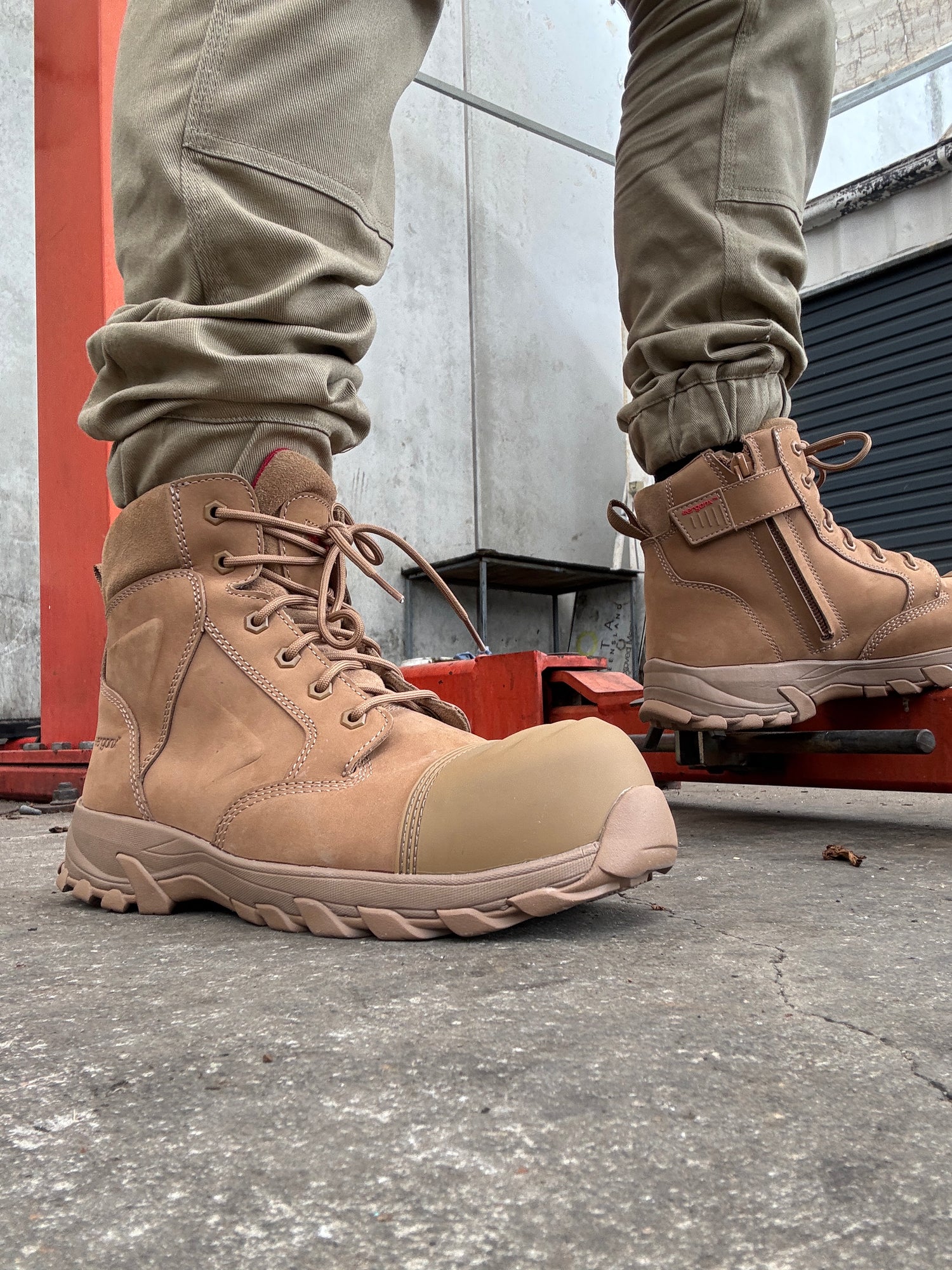If you’re on your feet all day at work, tight calf muscles could be silently leading to foot pain, heel strain, and even long-term injuries. So, what warm-up routine helps prevent foot injuries at work?
The answer: consistent, targeted calf stretching.
Why Calf Stretching Matters on the Job

Your calves play a major role in walking, balance, and weight transfer. When they become tight — especially after hours in stiff work boots — they pull on the heel, overload the plantar fascia, and reduce ankle mobility. This leads to common foot problems like:
- Plantar fasciitis
- Heel pain and spurs
- Shin splints
- Limited range of motion and poor foot alignment
Tight calves also affect your knees, arches, and even toes, increasing pressure and risking further discomfort or injury.
How Tight Calves Create Foot & Leg Injuries
When your calf muscles are inflexible, every step places more tension on your foot, particularly the arch, heel, and Achilles tendon. Over time, this tension can:
- Strain the plantar fascia
- Cause microtears in the heel area
- Shift your posture and increase stress on the knees
- Interfere with your natural walking mechanics
If you’re already dealing with flat feet, bunions, or other structural foot conditions, tight calves only make things worse.
The Best Calf Stretch for Workers on Their Feet
This single stretch targets the two main calf muscles — the gastrocnemius and soleus — and is easy to perform anywhere on-site or at home.
Wall Calf Stretch
- Stand facing a wall about 1 metre away.
- Step your left foot forward and keep your right foot behind you, heel flat.
- Keep both feet pointed forward and gently bend the front knee, leaning into the wall.
- You should feel a stretch in the right calf.
- Hold for 30 seconds, then switch legs.
- Repeat 2–3 times per leg.
To target the soleus (the deeper calf muscle), simply bend both knees slightly while keeping the back heel down.
When to Stretch Calves for Injury Prevention
You should stretch your calves:
- Before work, after putting on your boots
- During breaks, especially if your legs feel tight or sore
- After work, to help the muscles recover
- Before and after any workout or walking session
Consistent calf stretching keeps your feet, ankles, and legs mobile and reduces overall pain and tension from long shifts.
Stretching your calves is essential — but pairing it with good footwear, orthotics, or shoe inserts multiplies its benefits. If your shoes don’t support your arch, absorb shock, or accommodate your foot type, tight calves can still lead to injury despite your stretching routine.
Podiatrist-designed shoes, especially those with custom orthotics, help maintain proper alignment, ease the load on your calves, and reduce overall pain and fatigue during walking or standing.
Simple Daily Habit, Long-Term Results
Taking just 5 minutes a day to stretch your calves can help:
- Prevent foot and leg injuries
- Improve your overall mobility and balance
- Ease foot pain and tightness
- Support better posture from the ground up
Protect your feet and legs with one of the most effective warm-up habits you can build: calf stretching. It’s easy, takes little time, and can dramatically improve your performance, comfort, and long-term foot health.



